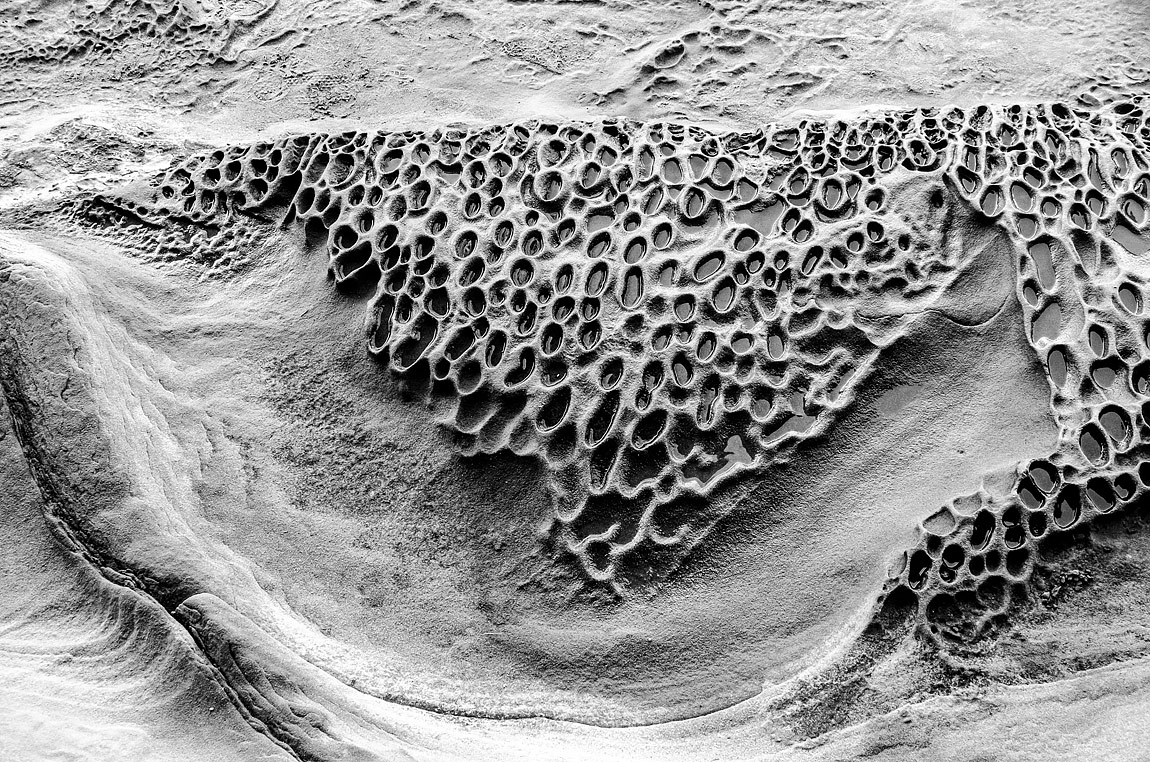Sandy Lace Draped over Sandstone
Having lived out here in the Pacific Northwest for over 30 years, and as a landscape photographer, I've enjoyed all the advantages of island life — the beauty of pristine, natural settings, tranquil locations with barely a soul in sight, diverse subjects ranging from the grandiose to the more diminutive and everything in between. And now that I live on Vancouver Island, a 20-minute ferry ride from Nanaimo (not far from my new home) takes me to one of the most fascinating islands I've wanted to visit since I moved out to the West Coast.
Gabriola Island is the most northerly of the Southern Gulf Islands in the Strait of Georgia. 30,000 - 11,000 years ago, the island was covered in ice up to 2 km thick. Deposits of sand, gravel, and boulders were left by melting glaciers. Still, the main rocks exposed on Gabriola's surface are sandstone and shale, which have been transformed into the cliffs, points, and bays you find along Gabriola's shoreline. One of the most spectacular natural features is known by Gabriolans as the Malaspina Galleries. It is a mammoth, 100m long barrel wave formation created by the erosion of sandstone by salt. And because the wave is almost 4 m tall, you can walk beneath it and marvel at the intricate tide pools and patterns, some of which resemble flowing lava.
As I meandered along, discovering otherworldly compositions at my feet, these unusual clusters of pockmarked stone — "honeycomb holes" struck me. Both my photographer brother, Michael and I were captivated by this particular triangle embossed on the floor, all the exquisite details which I hoped to capture in this black and white image.


